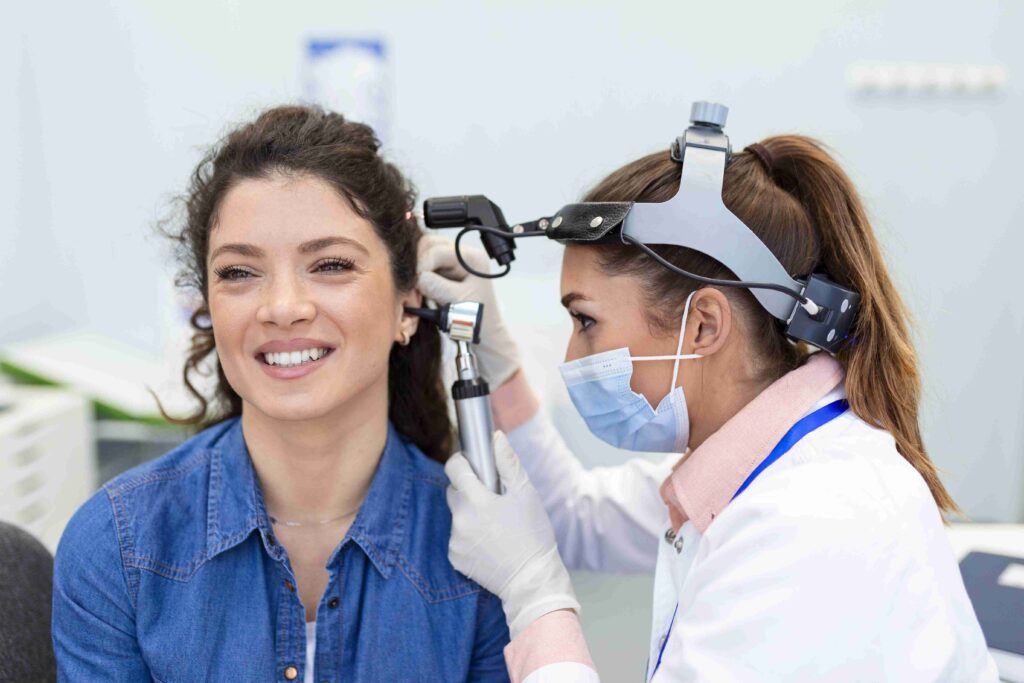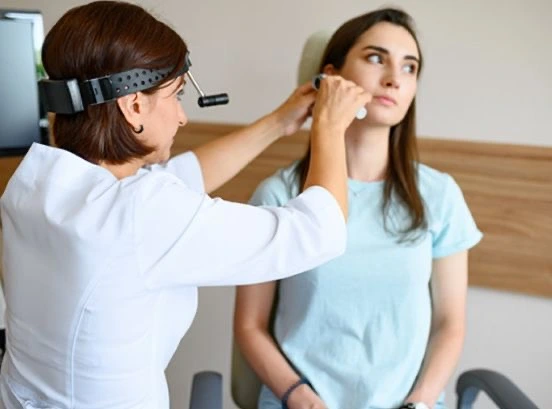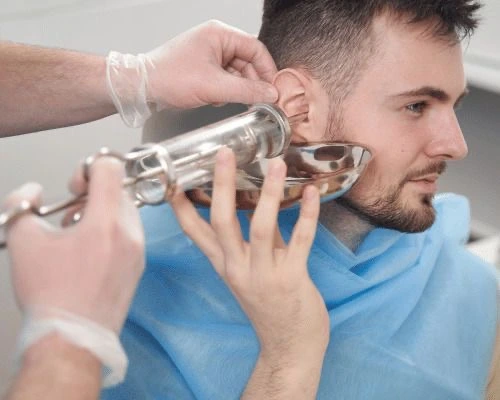
Your ears might feel perfectly fine — no pain, no muffled hearing, no visible signs of trouble. But does that mean they’re truly clean and healthy?
The short answer: not always.
While earwax (cerumen) is natural and even beneficial in small amounts, buildup can occur slowly and silently, leading to issues that are often overlooked until it’s too late.
Let’s explores why professional ear cleaning matters — even if you have no obvious symptoms — and how routine checks can protect your long-term ear health.
What Is Earwax and Why Do We Need It?
Earwax is a sticky substance secreted by glands in your ear canal. It plays several important roles:
- Protects against dust, dirt, and bacteria
- Moisturises the skin inside the ear
- Acts as a self-cleaning mechanism
🟡 Fun Fact: Your ears are self-cleaning machines — when functioning properly, they gradually push out excess wax naturally.
But here’s the catch:
Factors like age, ear canal shape, frequent headphone use, or improper cleaning (yes, we’re looking at you, cotton buds!) can cause wax to accumulate, harden, and become impacted.l

Can You Have Too Much Earwax Without Symptoms?
Absolutely.
Most people believe if they’re not experiencing hearing loss or pain, their ears must be clear.
But earwax buildup can be slow and silent — until one day it suddenly causes:
- Blocked ears
- Dizziness
- Tinnitus (ringing in the ears)
- Earache
- Increased risk of infections
Even without symptoms, excess wax can reduce hearing clarity, especially in crowded places or while using headphones. That means you could be straining to hear and not even realise it.
Why Routine Professional Ear Cleaning Matters
Just like you visit the dentist even when your teeth don’t hurt — your ears deserve the same proactive care.
Here’s why:
1️⃣ Microsuction Detects Issues Early
Professional clinics use a camera (otoscope) to examine your ear canal before cleaning.
This can detect wax buildup, infections, or abnormalities before they become serious problems.
2️⃣ Avoid Risky DIY Methods
Cotton swabs often push wax deeper, risking damage to the eardrum.
Other methods like ear candles or home irrigation can cause burns, infection, or even hearing loss.
✅ Microsuction is a safe, ENT-approved technique that gently suctions wax out — no water, no mess, no damage.
3️⃣ Improves Focus and Clarity
Even mild wax buildup can cause “underwater hearing” — especially in children, seniors, or those with narrow ear canals.
Routine cleaning boosts hearing clarity, making conversations easier and reducing listening fatigue.

Who Should Get Routine Ear Check-Ups?
You should consider a professional ear cleaning every 6 to 12 months if:
- You wear earphones or hearing aids frequently
- You work in dusty, noisy, or humid environments
- You’re over age 50
- Your children often suffer earaches
- You swim regularly
- You have a history of wax buildup or ear infections
Even if you don’t fall into these categories, getting your ears checked once a year is a healthy habit.
Signs You Might Be Due for a Checkup (Even If Subtle)
- Frequently asking people to repeat themselves
- Turning up the TV or phone volume
- Feeling like you’re “not hearing right”
- Slight dizziness or imbalance
- A feeling of pressure in the ear
- Regular itchiness in or around the ears
These are mild signs of buildup that can go unnoticed — but a simple check-up can provide peace of mind and clarity.
Microsuction: What Happens During a Cleaning Appointment?
Step 1: Visual Assessment
Your ear canal is examined using a special camera or otoscope.
Step 2: Wax Removal Using Microsuction
A small, sterile suction device gently removes wax. It’s quiet, painless, and usually done in under 30 minutes.
Step 3: Re-check and Aftercare Advice
Your ear is re-examined post-treatment to ensure it’s clear and healthy. You’ll get tips for preventing future buildup.
📍 At Better Ears, we offer home visits and clinic appointments with a fully insured ear clinician.
Common Myths About Ear Cleaning – Busted!
🔸 Myth 1: Cotton buds clean my ears.
🛑 No — they push wax deeper and can damage the eardrum.
🔸 Myth 2: If I don’t feel blocked, I don’t need cleaning.
❌ False. Many people have buildup without symptoms.
🔸 Myth 3: Earwax is dirty.
🚫 Not true. It protects and moisturises — but too much becomes a problem.

Safe at-Home Ear Care Tips
While professional cleanings are best, here are some things you can do:
- Use a damp cloth to gently clean the outer ear
- Avoid putting anything inside your ear canal
- Use earplugs when swimming
- If prone to wax, try olive oil ear drops occasionally (ask your clinician first)
Remember: if you’re unsure, don’t self-treat — book a consultation.
Why Better Ears Is the Trusted Choice
- 🩺 Fully insured, experienced ear clinician
- 🔍 Camera-assisted ear checks
- 👶 Child-friendly and senior-safe methods
- 🏠 Home visit or clinic appointment
- ✅ ENT-trusted microsuction technology
We take the time to explain what’s happening and make you feel at ease — especially if it’s your first time.
Conclusion: Clean Ears, Clear Life
Even if your ears feel fine, silent buildup could be affecting your clarity, focus, and well-being.
Routine professional ear cleaning is safe, effective, and a small step that makes a big difference.
Don’t wait for symptoms to show — be proactive about your ear health.
Book your appointment with Better Ears today and hear the difference!
Call to Action
✨ Clear ears, clear mind.
📍 Home visits & clinic appointments available
📞 Connect at 07706135883
🔗 Visit betterears.org to book now!
